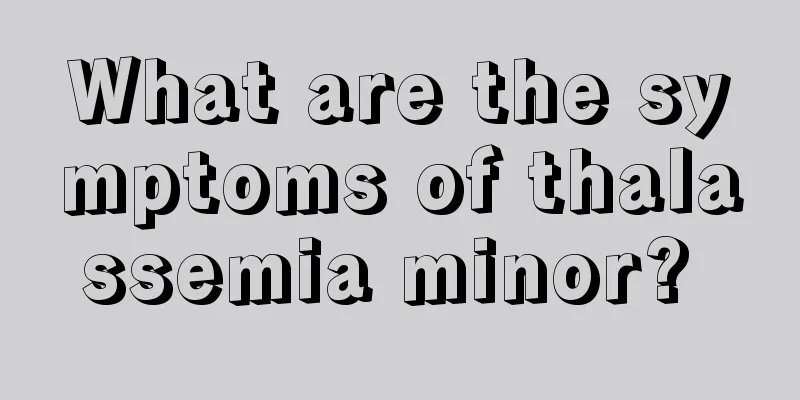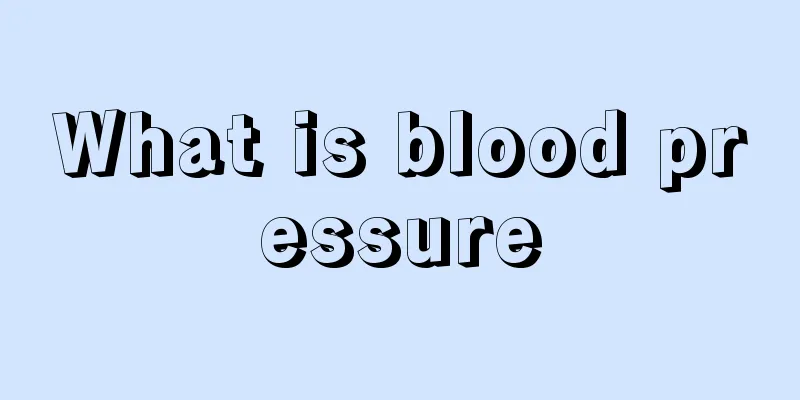What are the symptoms of thalassemia minor?

|
In life, we all know that thalassemia is a hereditary disease. Thalassemia is generally divided into three types: severe, toxic and mild thalassemia. No matter which type of thalassemia it is, it is a relatively serious disease and everyone must pay attention to it. However, most people do not particularly understand the symptoms of thalassemia. What are the manifestations of mild thalassemia? The symptoms of thalassemia are described below. Is thalassemia minor serious? Thalassemia is a type of hemolytic anemia caused by autosomal genetic defects, which leads to impaired globin chain synthesis, resulting in insufficient or complete lack of one or several globins, making red blood cells easily lysed and destroyed. Because the disease was first discovered in the Mediterranean, it was named thalassemia. my country's Natural Science Terminology Review Committee recommends that the name of this disease be thalassemia. It is still customarily called thalassemia, or thalassemia for short. The globin in normal adult hemoglobin is composed of four peptide chains. This disease is caused by the deletion or point mutation of the globin gene. There are four types of peptide chains that make up globin, namely α, β, γ, and δ chains, which are encoded by their corresponding genes. The deletion or point mutation of these genes can cause synthetic disorders of various peptide chains, resulting in changes in the composition of hemoglobin. Thalassemia is usually divided into four types: α, β, γ and δ, among which β and α thalassemia are more common. There are three main types of common thalassemia: mild, intermediate and severe. Currently, the most successful treatment for severe thalassemia is through hematopoietic stem cell transplantation. Symptoms of different types of thalassemia are as follows: 1. Symptoms of Thalassemia Major Symptoms of major thalassemia include anemia within a few days after birth, progressive hepatosplenomegaly, jaundice, and developmental failure. Special manifestations include: enlarged head, widened eyes, saddle nose, prominent forehead, prominent cheeks, and a typical gluteal head with fractures of long bones. Bone changes are caused by hyperfunction of bone marrow hematopoiesis, widening of bone marrow and thinning of cortex. A small number of patients develop chest masses between the ribs and spine, and cholelithiasis and lower limb ulcers may also be seen. Common complications include acute pericarditis, secondary hypersplenism, and secondary hemochromatosis. 2. Symptoms of Thalassemia Intermediate Most people with moderate anemia survive to adulthood. Such patients have pale complexion, fatigue, loss of appetite, low immunity (susceptible to infection, etc.), slow development and enlarged liver and spleen. It is more common in children. There is no abnormality at birth. A few months after birth, the sick child gradually develops pale complexion, dull expression, dementia-like face, developmental problems, increasingly obvious anemia, hepatosplenomegaly, etc. 3. Symptoms of Thalassemia Minor Mild anemia or no symptoms is usually discovered when investigating family history. Treatment of thalassemia Thalassemias are a group of inherited microcytic hemolytic anemias. It is very harmful to people, especially pregnant women, and may even affect the fetus. Therefore, patients with thalassemia must receive timely treatment, find out the cause, and treat it accordingly. At present, the treatment method for thalassemia patients is mainly Western medicine treatment method, the specific methods are as follows: 1. Drug treatment: pay attention to rest and nutrition; actively prevent infection; appropriately supplement folic acid and vitamin E; blood transfusion and iron removal - still one of the important treatment methods; iron chelators - commonly used deferoxamine, can increase iron excretion from urine and feces. 2. Surgical treatment: splenectomy; hematopoietic stem cell transplantation - currently the only method that can cure severe β-thalassemia. 3. Other special therapies: gene activation therapy. Generally speaking, patients with mild thalassemia do not require special treatment, and the main focus is on intermediate and severe thalassemia. Patients with mild thalassemia: pay more attention to diet and daily life, take proper care, do more appropriate physical exercises, and enhance physical fitness and disease resistance. In addition, you should keep a happy and optimistic mood and avoid excessive emotions. Severe thalassemia requires hematopoietic stem cell transplantation. Without hematopoietic stem cell transplantation, patients can only rely on blood transfusions and long-term use of iron-removing agents to maintain life. At the same time, iron-removing agents must be used in combination. Even so, with long-term blood transfusions, more and more iron will be deposited in organs such as the liver and spleen, causing these organs to fail and leading to the patient's death. In addition, hematopoietic liver cell transplantation also carries considerable risks. |
<<: What should I do if my baby has nasal congestion?
>>: What are the symptoms of anemia in a 2 month old baby?
Recommend
How to care after prostate cancer surgery
Prostate cancer is a relatively serious disease. ...
What are the treatments for pericarditis
Pericarditis is a common disease in life because ...
Is reflux esophagitis serious? What harm will it bring?
Reflux esophagitis is a common digestive tract di...
Skin cancer preoperative examination and care
When we suffer from skin diseases, our lives will...
There are red bumps on my breasts
The symptom of red bumps on the breasts is most l...
What causes bitter taste in the mouth?
If you feel bitter in your mouth as soon as you w...
What are the causes of Sjögren's syndrome?
Sjögren's syndrome is a common disease. Studi...
Can secondary lymphoma be cured?
In recent years, we have found that the incidence...
Which ingredients in lipstick are harmful?
Lipstick is a common cosmetic in life and plays a...
What should we do to prevent fibroids
What should we do to prevent fibroids? With the c...
What effects will long-term rhinitis have
Human health is very important, and many people w...
I felt stomach discomfort after dinner
Many people skip dinner when they are losing weig...
What are the symptoms before death from lung cancer brain metastasis? 7 common symptoms before death from lung cancer brain metastasis
The symptoms before death from lung cancer brain ...
What is the main cause of cervical cancer in women?
What are the causes of cervical cancer? I believe...
Drink a glass of water in the morning, you will see visible changes in your body, you must drink it
Do you know? The "water" you drink play...









